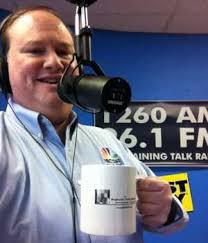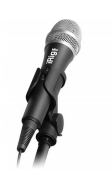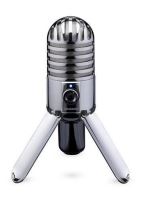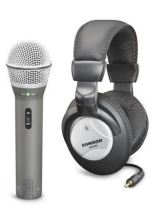Getting Quality Audio Anywhere

[May 2012] It is easy to get audio back to the studio: just shout into your cell phone. It might even be intelligible. On the other hand, there are ways to record and transmit clean audio from where news or other events are going on. Mark Shander continues his discussion.
Micro-studios are small, often portable, equipment groups configured to provide studio-like sound quality in a package that is small enough to transport easily to an event. In most cases, professional broadcasters will rely on broadcast CODECs to make sure connections and sound are the best they can possibly be.
Broadcast CODECs are reliable, and dependable. On the other hand, using Skype or other consumer-oriented telecommunications utility apps and programs may save money.
You Need the Right Tool
But remember, these are business tools, and selecting the right one is an important business decision.
Think about it – while some QoS (Quality of Service) components help, you are not in control of the whole process unless you are using an integrated CODEC, and you are risking potential issues that could cause breakup on the air, which is very disruptive.
In our previous columns, we have broached the idea of augmenting professional equipment with the use of some newer consumer equipment. Frankly, while some of it is quite good, other items just are not designed for the rigorous demands of broadcast professionals. This might be due to physical construction or sonic issues.
Fortunately, I have had an opportunity to review quite a few pieces of mass-produced consumer gear that have become very popular potential replacements for pro equipment due to their cost. The right choices could potentially save you a lot of money over their hardcore, hardware brethren.
So, here is my take at what works – and what does not – along with some suggestions and concerns.
Good Audio – Low Price
 Last time out we mentioned the iRig Microphone from IK MultiMedia. It is geared toward musicians and others looking for a high-quality hand-held condenser micro-phone to make quality audio and vocal recordings anywhere on your iPhone, iPod touch and iPad.
Last time out we mentioned the iRig Microphone from IK MultiMedia. It is geared toward musicians and others looking for a high-quality hand-held condenser micro-phone to make quality audio and vocal recordings anywhere on your iPhone, iPod touch and iPad.
With three sensitivity characteristic positions on the microphone, this was one of the most flexible condenser microphones I have ever tested, though not the most competitive sounding. It is good, but it might be argued that it is a little harsh.
Use this if you are looking to mike more than one person or capture a whole group with a single microphone. I did a whole episode of a two-hour talk program with two hosts and a guest using a single iRig Microphone for NBC 1260/96.1FM in Phoenix. That is definitely its strength, and it does it exceptionally well.
The plug at the end of the microphone cable connects to the headphone IO jack on the Apple device, and features a jack for headphones or a headset to plug into, allowing real-time monitoring while recording.
The free accompanying app that is available in Apple’s iTunes App store lets you do some simple editing. The app also lets you email or FTP recordings for ease of delivery to a broadcast facility or computer or DAW (a digital audio workstation) for immediate broadcasting or editing. Upgrades to the App include multi-track and other recording enhancements and features.
The value of the multi-track feature and the ability to get audio from a mobility device so simply just cannot be overlooked. The cost is around $50 (plus a few dollars to enable a feature to keep the quality high while you extract the recordings wirelessly).
You cannot go wrong with the iRig. But it is not your only choice.
Some Strong Microphones From Samson
 If you ask me, Samson has a hit on its hands with the Samson Meteor Microphone.
If you ask me, Samson has a hit on its hands with the Samson Meteor Microphone.
This smooth, large 25mm diaphragm condenser microphone has a flat frequency response from its cardioid pickup pattern, a pleasing proximity effect, and sounds surprisingly good.
The Meteor is durable, and connects to laptops using the included USB cable and has a microphone-jack built in for no-latency monitoring. There was no need to install drivers.
The Meteor also has a mute switch – which in practice cannot be used while on-air because it is noisy to click on and off – but it does what it is supposed to and turns the microphone on and off when it needs to.
That having been said, I cannot stress how surprised and impressed I was to find a microphone at this price-point that was as durable and had the quality of sound as the Meteor Microphone.
It is highly recommended, and you can afford to buy one for every laptop your reporters or editors use.
Q2U
Samson also has a Q2U dynamic USB microphone recording pack that includes a pair of HP20 stereo headphones.
 Although the Q2U it is a dynamic microphone with a cardioid pick up pattern, it sounds just fine for voice recordings in the field – and it even has an LED clipping indicator, something sadly lacking on a lot of consumer-grade recording equipment.
Although the Q2U it is a dynamic microphone with a cardioid pick up pattern, it sounds just fine for voice recordings in the field – and it even has an LED clipping indicator, something sadly lacking on a lot of consumer-grade recording equipment.
The Q2U supports XLR and USB connections and is available at many retailers. It is considered to be a starter system, and includes Cakewalk’s Music Creator 5 LE, a 16-track recording software package that supports 3rd-party VST plug-ins and effects.
While I was not overly impressed with the tonal quality of the headset or the ability to drive the headphones with excessive gain, they do the job they are intended for – they permit monitoring of the input signal, and can be used to verify quality recording. You will not convince your kids to give up their Dr. Dre Beats for these, but again, they get the job done.
The microphone and the headphones are both available for one low price, and include the software – it turns a laptop into a reasonable-sounding portable studio, and the microphone appears to be built to take a lot of punishment – much more so than many of its competitors.
In our next column, we will increase the budget a bit and look at some moderately-priced equipment for your Micro-studios. These will include gear designed specifically to meet the demands you and other broadcasters require – built with real, hardcore broadcast tools from broadcast equipment manufacturers that your employees can depend upon.
– – –
Mark Shander, a computer show host and syndicator, is based in Phoenix, AZ. You can contact him at mark@shander.com
